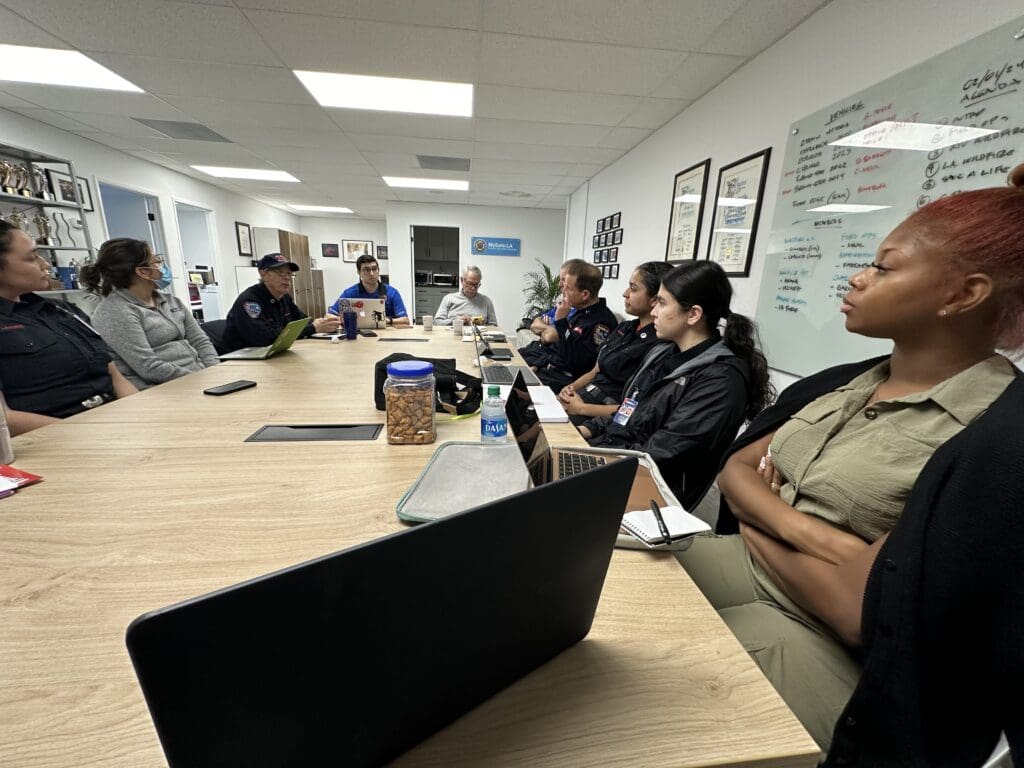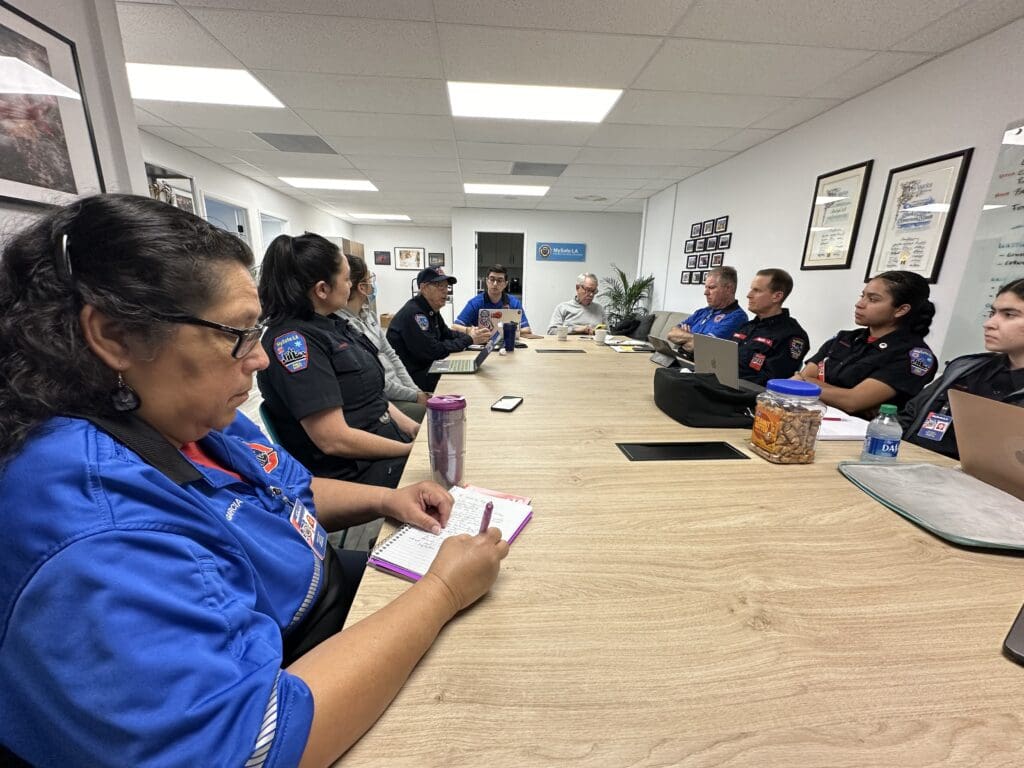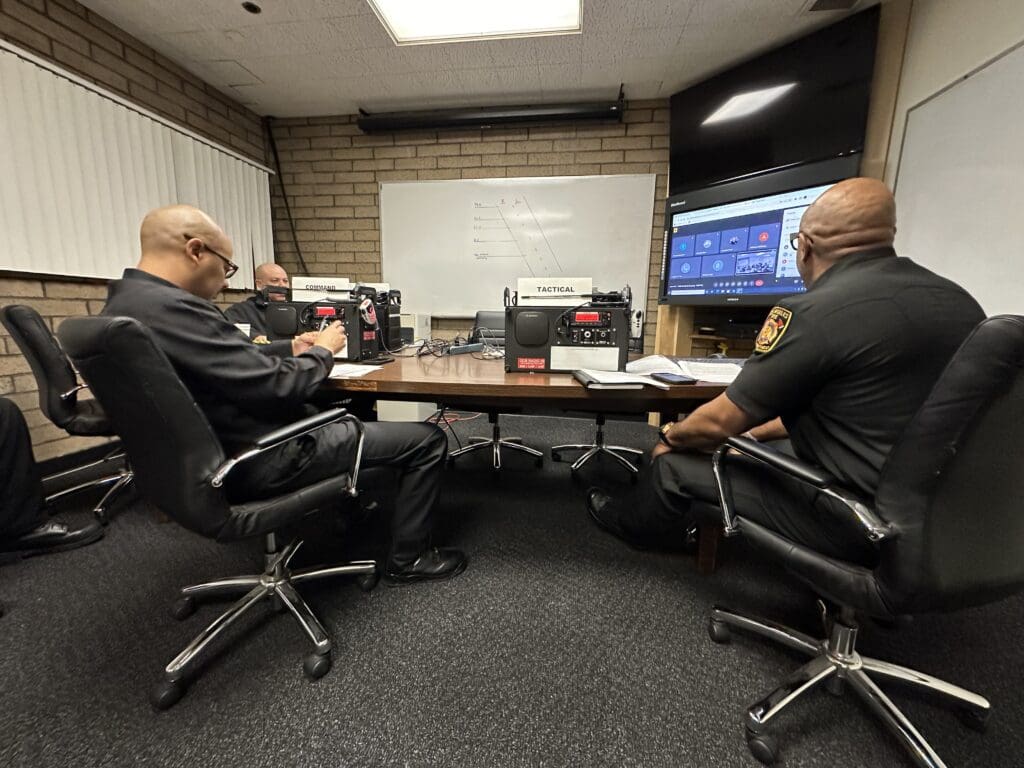
The Safe Community Project dedicates a few days every year to focus on the open issues, gaps, and needs of the greater Los Angeles and Riverside communities regarding a combination of wildfire, house fires, earthquakes, and other disasters. Additionally, our training and film unit spends equal time evaluating the best practices for developing emergency operations plans, courses, and LMS, and other related activities.
This year’s meeting, in our field operations offices in Playa Vista, California focused on the important need to assist the Los Angeles City Fire Department with issues related to community risk reduction.

Overall, this isn’t a new issue for us, but is one that we are working to expand. Here’s how MySafe:LA supports LAFD in CRR activities:
- Education and Outreach: MySafe:LA provides extensive public education on fire safety, earthquake preparedness, and other emergency preparedness topics. They conduct school programs, community presentations, and online educational campaigns aimed at reducing risks and enhancing the safety of residents.
- Smoke Alarm Installation Programs: One of their key initiatives involves the installation of smoke alarms in homes throughout Los Angeles, especially targeting vulnerable populations and neighborhoods that might lack these essential safety tools. This not only helps in early detection of fires but also educates the public on the importance of smoke alarms and how to maintain them.
- CPR Training: MySafe:LA offers CPR training to the public, enhancing the community’s ability to respond effectively in emergency situations. This training includes the use of automated external defibrillators (AEDs), further improving the community’s resilience in life-threatening situations.
- Fire Safety Inspections and Assessments: Collaborating with LAFD, MySafe:LA helps in conducting home fire safety inspections and assessments. This initiative helps identify potential fire hazards in homes and advises residents on how to mitigate these risks.
- Emergency Preparedness: They also focus on broader emergency preparedness, educating the public about actions to take before, during, and after disasters. This includes preparing emergency kits, making family communication plans, and understanding evacuation routes and procedures.
- Senior Safety: MySafe:LA has specific programs tailored for older adults, recognizing their unique vulnerabilities. These programs focus on preventing falls, ensuring proper medication management, and fire safety, which are critical for the well-being of senior citizens.
- Partnerships and Collaboration: MySafe:LA works closely with other organizations and agencies, including LAFD, to create a network of support that enhances overall community safety. These partnerships help leverage resources and coordinate efforts across different sectors.
- Research and Data Analysis: MySafe:LA assists LAFD with data collection and analysis concerning fire incidents and community engagement efforts. This information is vital for understanding the effectiveness of current CRR strategies and for planning future initiatives.
- Public Service Announcements and Media: Utilizing various media platforms, MySafe:LA helps spread critical information and safety messages. This broad reach helps ensure that safety messages are accessible to a wide audience.

Through these activities and initiatives, MySafe:LA plays a crucial role in supporting the LAFD in its Community Risk Reduction efforts, significantly contributing to making Los Angeles a safer place to live. As we move into 2024, our objectives are to better engage each of the four geo bureaus in our work, collaborating with the four Community Resilience Officers (CROs), as well as Bureau Commanders and Emergency Operations.
